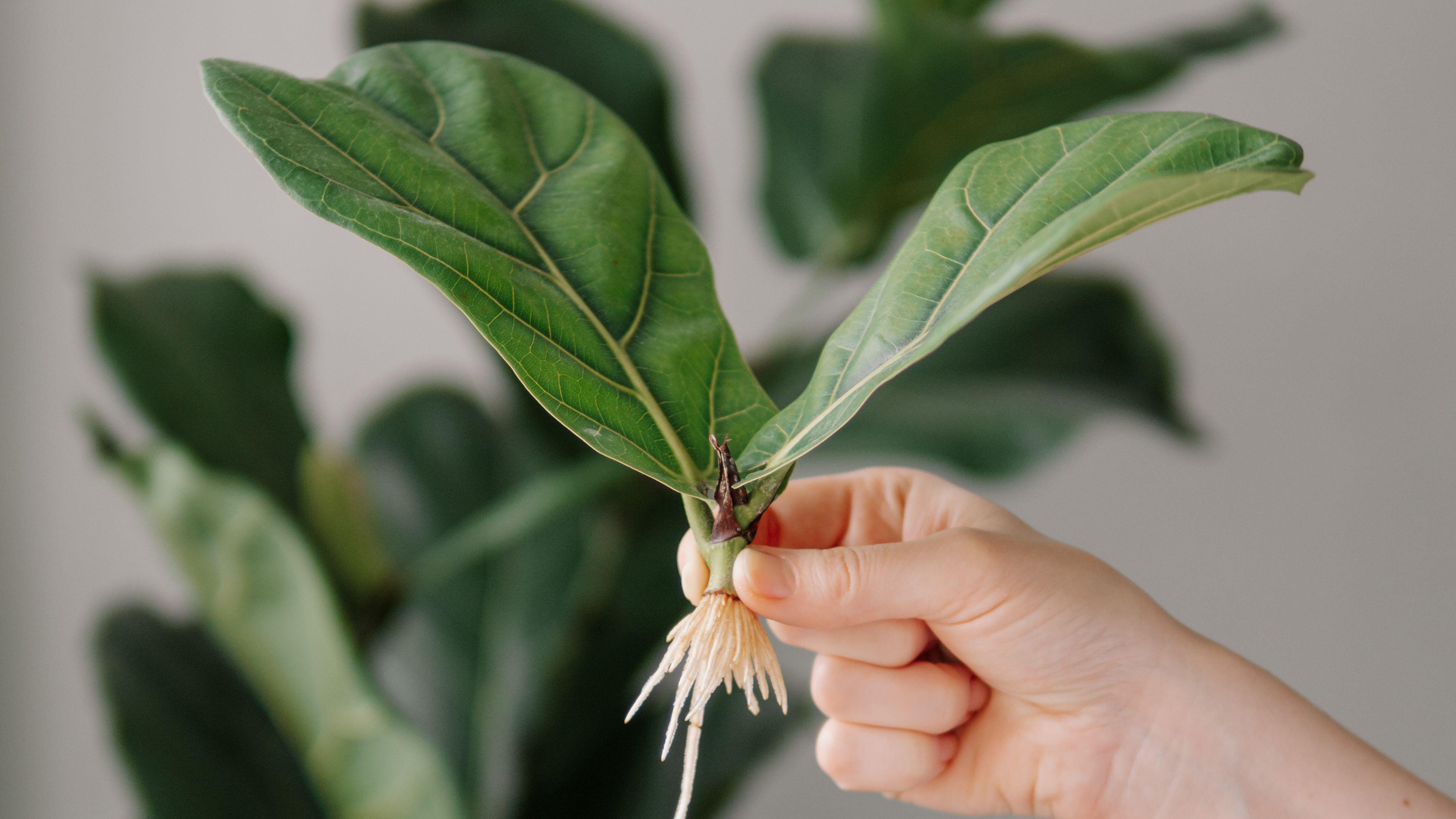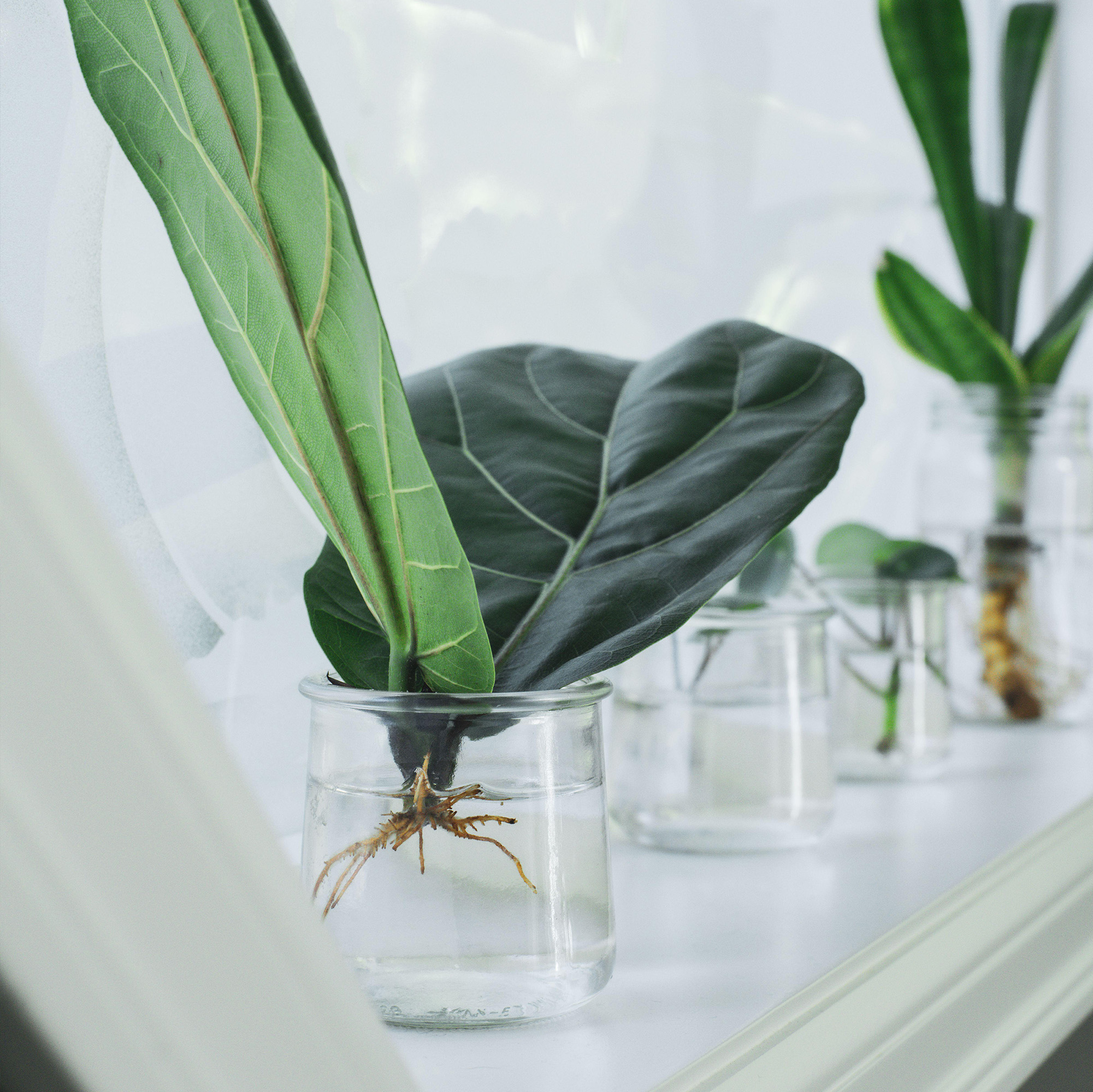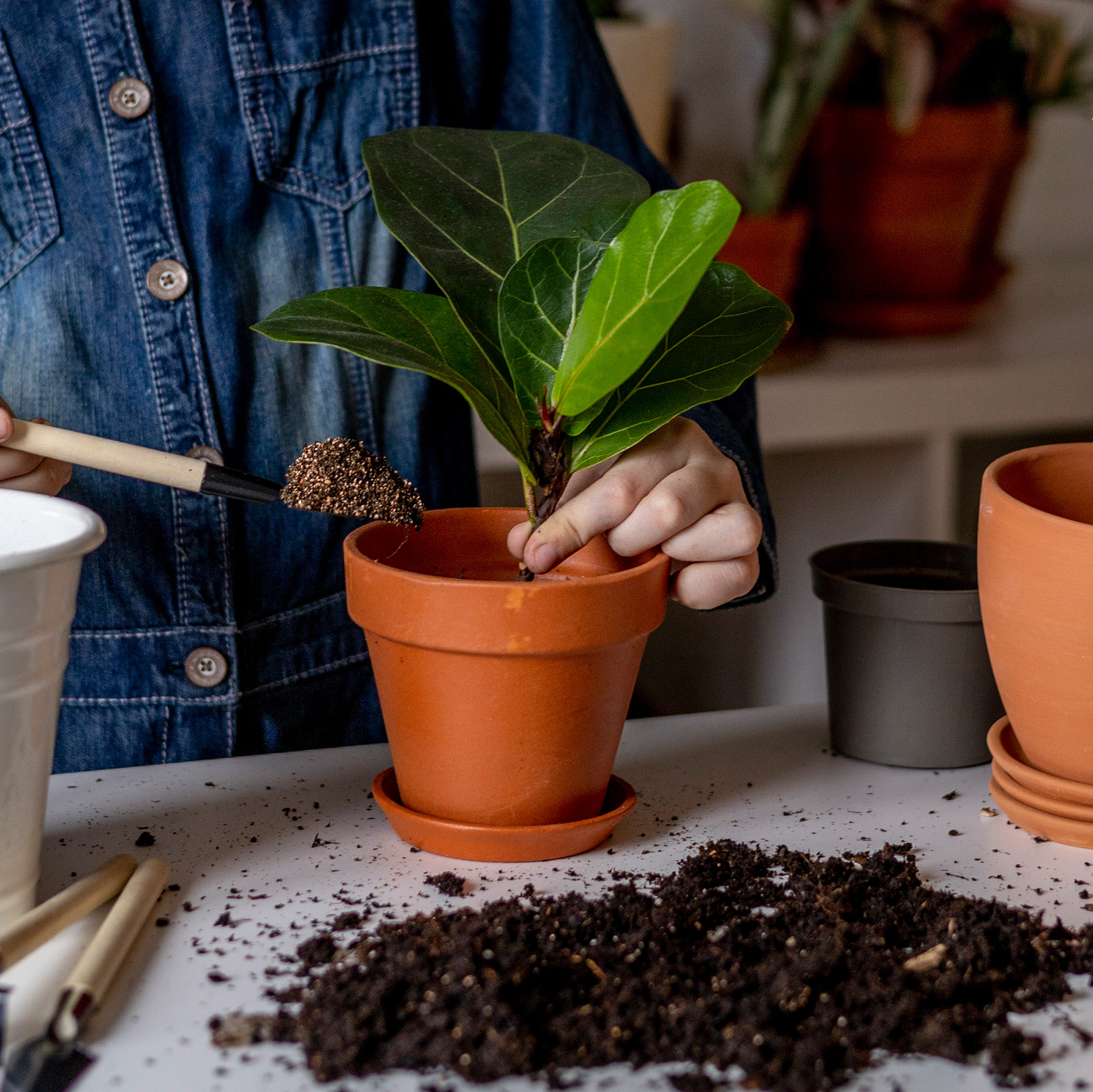How to propagate a fiddle leaf fig – 3 easy steps to grow more of these striking, on-trend houseplants for free
Propagate a fiddle leaf fig to multiply your collection of this favourite houseplant


Learning how to propagate a fiddle leaf fig is an extremely rewarding experience. While this plant has a reputation for being difficult to care for, it is surprisingly easy to propagate a fiddle leaf fig.
Before you start making more plants, it is important that you ensure you know how to care for fiddle leaf fig – ensuring a healthy parent plant is key in ensuring healthy cuttings.
How to propagate a Fiddle Leaf Fig
Propagation is best done in mid-to-late spring. The best method for propagation is via cuttings and it is much easier than you might have thought.
If well cared for, fiddle leaf fig plants can grow up to two metres tall, and while this perfect for bringing some tropical charm to your urban jungle room ideas – it can be too large for many spaces. Pruning a fiddle leaf fig is a great way to keep it in check and these cuttings can be used to create new plants.
You will need
- a healthy plant with lots of leaves growing from long stems
- a sharp pair of secateurs (try the Spear & Jackson 56418P Pink Garden Snips from Amazon
- a glass of clean water or a propagation station
- a sunny spot, like a windowsill
- Compost, like Miracle-Gro Premium Houseplant Potting Mix Compost from Amazon
- Small pot with drainage holes – or one large pot with drainage holes
- Gloves – like these nitrile-coated ones from Amazon – are essential as the sap is toxic
1. Take your cutting

‘Start by selecting a healthy stem at least a pencil thickness, and counting back at least five or six nodes from the tip – nodes are the growing points along the stems where leaves come from – so that the cutting is at least 15cm long,’ says Kelly Dyer from Patch Plants.
Before cutting your plant, make sure that you clean your secateurs or snips, wiping them with a bleach-free disinfectant – like this Miniml spray from Amazon – will suffice. This will prevent infection from infecting the cutting or parent plant.
Always wear gloves when cutting a fiddle leaf fig as the sap is an irritant and is toxic to humans, cats, and dogs if ingested.
If you're lacking confidence when taking cuttings, try taking cuttings the Monty Don way.
2. Propagate your fiddle leaf fig in water

You can then either grow your cutting in water or compost.
Propagating a fiddle leaf fig in water is exactly the same as propagating tradescantia. To propagate in water submerge the bottom two-thirds of the cutting in a glass of water.
‘Pop on a sunny windowsill, keep the water topped up and fresh, and soon enough roots will grow,’ says Kelly Dyer from Patch Plants. When your cutting has a healthy root system, you can then pot this up in free-draining compost.
If you are planning to propagate lots of plants, then it might be worth thinking about creating a propagation station, or you can buy a desktop one from Amazon to add some greenery to your workstation.
3. Propagate your fiddle leaf fig in compost

To grow in compost, ‘fill a 9cm pot with good quality peat-free houseplant compost and push the cutting into the soil with just the leaf sticking out,’ says Angela Slater, gardening expert at Hayes Garden World.
‘Secure a plastic bag or top third of a 2ltr soft drinks bottle over the top. Once it has grown a second leaf, you can remove the cover. Place in a light warm spot until it has filled the pot with roots when it can be potted up into a larger pot.’
Angela also advises bottom watering the cutting – stand the pot in a saucer of tepid water for a few minutes until the compost is just damp.
FAQs
How long does it take to propagate a fiddle leaf fig in water?
On average, it takes around six to eight weeks to propagate a fiddle leaf fig in water – though this is just a guide. One of the benefits of propagating a fiddle leaf fig in water is that you will be able to easily see the progress as the roots grow.
Is it better to propagate fiddle leaf figs in water or soil?
It is better to propagate fiddle leaf figs in water as you will be able to see the roots growing and you don't have to worry about over or under watering the cutting and causing root rot. You just need to remember to change the water every week.
Get the Ideal Home Newsletter
Sign up to our newsletter for style and decor inspiration, house makeovers, project advice and more.

Holly is one of Ideal Home’s content editors. Starting her career in 2018 as a feature writer and sub-editor for Period Living magazine, she has continued this role also adding regular features for Country Homes & Interiors and the Ideal Home website to her roster. Holly has a passion for traditional and country-inspired interiors – especially kitchen design – and is happiest when exploring the countryside and hills of the Lake District. A keen gardener, she is a strong believer that you can never have too many houseplants.
You must confirm your public display name before commenting
Please logout and then login again, you will then be prompted to enter your display name.
-
 5 signs you’ve taken decluttering too far — and how you can pull yourself back, according to organisation experts
5 signs you’ve taken decluttering too far — and how you can pull yourself back, according to organisation expertsYou might have to start resisting the urge to purge
By Lauren Bradbury
-
 What is the Party Wall Act 3m rule and is it something you should be worried about? This is what the experts say
What is the Party Wall Act 3m rule and is it something you should be worried about? This is what the experts sayDon't get caught off-guard by the Party Wall Act 3m rule — our expert guide is a must-read
By Natasha Brinsmead
-
 Shoppers can’t get enough of The Range’s lemon tree, but I’ve found an even cheaper bestseller at B&Q - it’s perfect for a Mediterranean look
Shoppers can’t get enough of The Range’s lemon tree, but I’ve found an even cheaper bestseller at B&Q - it’s perfect for a Mediterranean lookWelcome the summer with this glorious fruit tree
By Kezia Reynolds